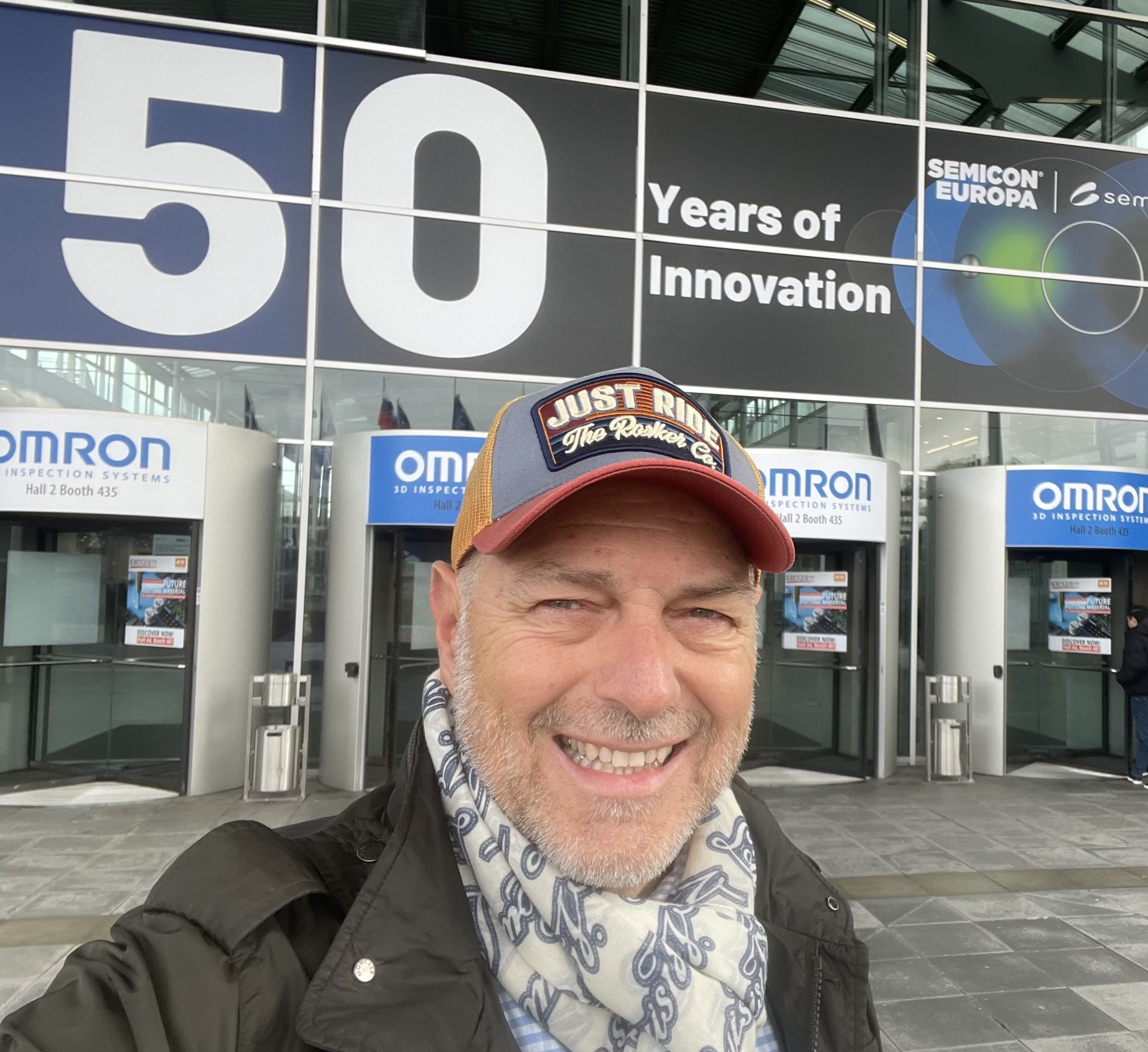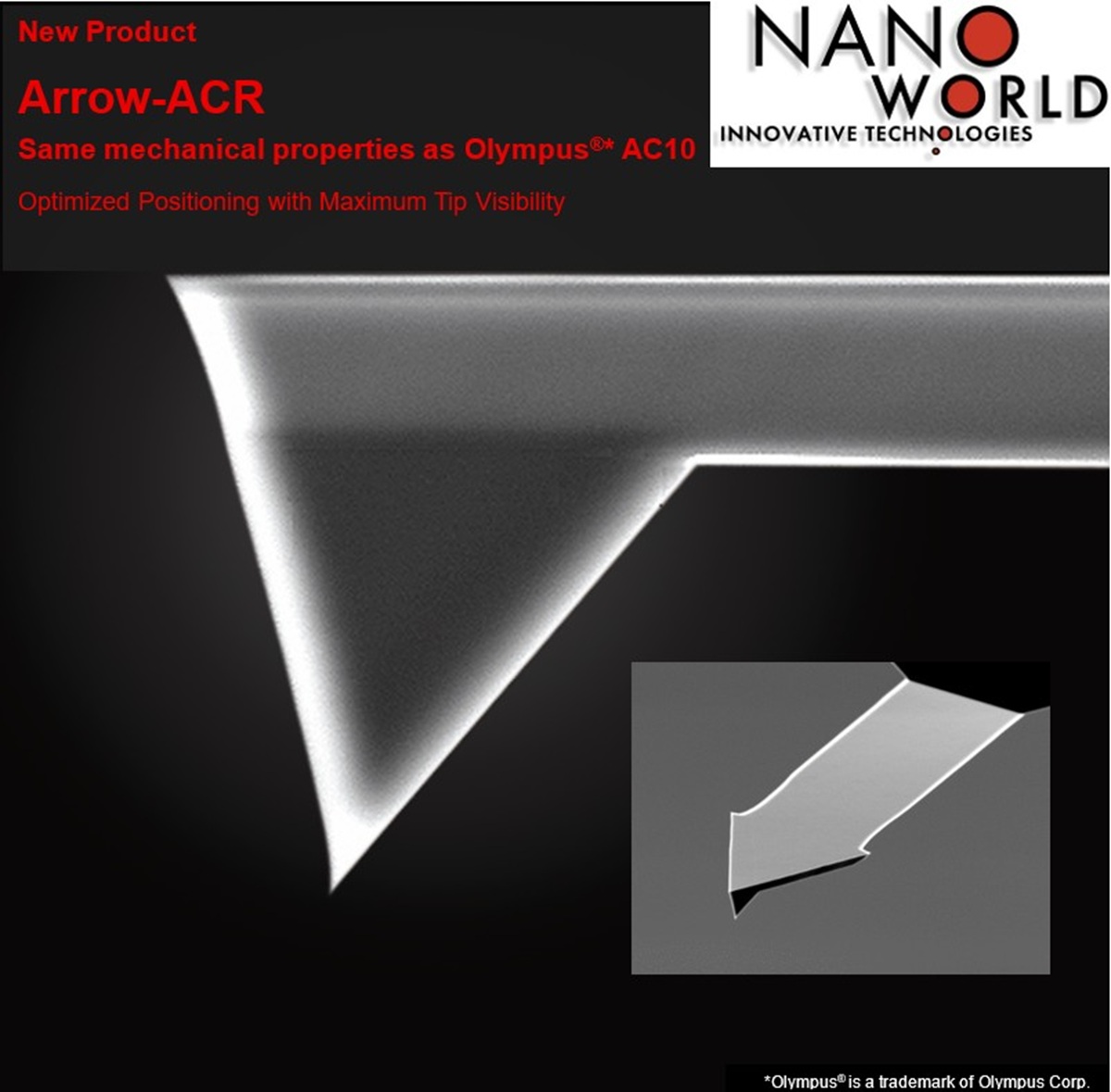NanoWorld AG CEO Manfred Detterbeck is attending the 50th anniversary edition of #SEMICONEuropa (co-located with productronica), which will take place from November 18-21, 2025 in Munich, Germany.
Will you be there to celebrate too?

NanoWorld AG CEO Manfred Detterbeck is attending the 50th anniversary edition of #SEMICONEuropa (co-located with productronica), which will take place from November 18-21, 2025 in Munich, Germany.
Will you be there to celebrate too?

A reliable replacement of the Olympus®* AC160 –
Optimized Positioning with Maximum AFM Tip Visibility
NanoWorld AG is pleased to introduce the new Arrow-ACR AFM probe, developed to provide research professionals worldwide with a dependable alternative to the discontinued Olympus®* AC160 microcantilever.
The Arrow™ ACR (typical resonance frequency 300 kHz, typical force constant 26 N/m), combines identical mechanical properties as the
Olympus®* AC160 with the well-known Arrow AFM tip and cantilever geometry. Always positioned exactly at the end of the AFM cantilever, this AFM probe offers easy positioning of the AFM tip over the area of interest.
With their moderate stiffness (typical force constant 26 N/m) the Arrow™ ACR probes are particularly suitable for studying relatively soft materials, including various polymers. These AFM probes are designed to perform optimally in non-contact/Tapping™ mode in air, enabling detailed characterization of thin films, coatings, surface roughness, and localized defects.
Users can expect stable operation, high sensitivity and high-speed scanning capabilities, ensuring reproducible data across a wide range of applications.
For researchers seeking a seamless transition from the discontinued
Olympus®* AC160, the NanoWorld® Arrow™ ACR offers a reliable solution backed by NanoWorld’s manufacturing precision and quality control.

*Olympus® is a trademark of Olympus Corporation
NanoWorld at the 63rd Annual Meeting of the Biophysical Society of Japan (Nara, Sept 24–26, 2025)
Hello from Nara! NanoWorld is exhibiting with our partner NanoAndMore Japan at the 63rd Annual Meeting of the Biophysical Society of Japan. If you’re working at the frontiers of biophysics—membranes, proteins, cell mechanics, or high-resolution imaging in liquid—come by booth #36 to discuss the best AFM probe for your experiment.
We’ll be showcasing the Pointprobe® and Arrow™ series—trusted worldwide for consistency, tip sharpness, and batch-to-batch reproducibility—plus short-cantilever options for fast dynamics. Our team can help you choose geometries and parameters that improve stability, SNR, and throughput on your instrument.
Let’s connect in Nara and move your research forward—one high-quality probe at a time.
Where: NanoAndMore Japan, Booth #36
When: Sept 24–26, 2025 • Nara Prefectural Convention Center
Will we meet you there too?